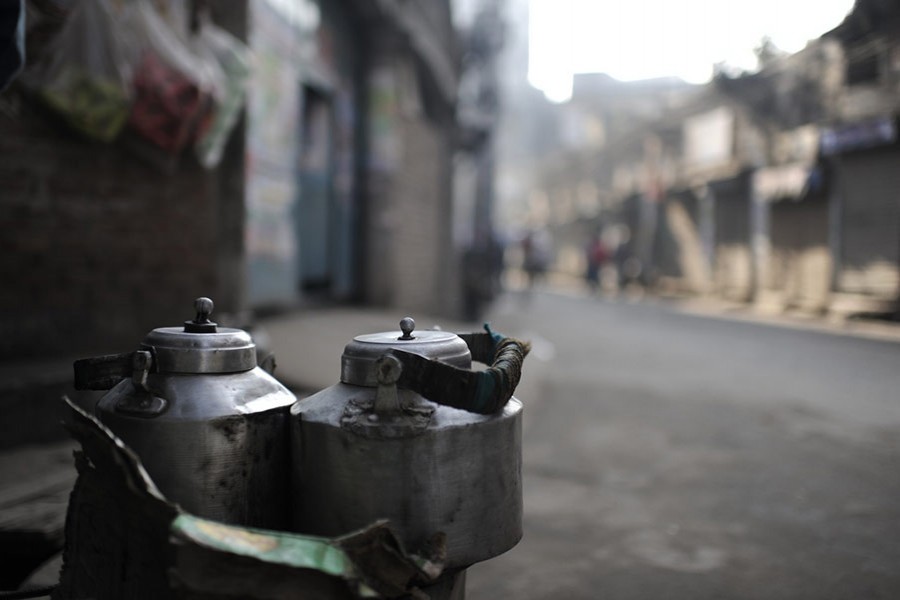Winter in this country appears nowadays with a few distinctive features every year. They are prominently visible and atmospheric, sensory to be precise. The visually prominent features include making and relishing 'pithas' (so-called winter cakes made of rice powder or paste), as well as date palm juice and molasses. Duck meat dishes and wearing warm clothes fall among them. The Bengali season of winter's physical presence also appears in the form of festivities and fairs. With their indigenous sources in rural Bangladesh fading, these winter manifestations and events have long become centred on Dhaka and the other cities. In the cities, festivals cover almost every fancy object. 'Pithas' and a few other winter delicacies enjoy a dominant place in these displays. These shows are given an added embellishment by calling them festivals.
Despite the villagers still being hit by whatever is left of the once-severe winter, they bother little if they have missed preparing a special winter culinary treat or attending a session of a folk social event. Not long ago the events would comprise the inevitable 'jatras' (rural operetta) and other traditional music sessions. Thanks to the fast change in the rural people's preferences for timeout activities, as well as the negative attitudes of the authorities, 'jatras' have taken a backseat. These age-old night-long performances have long begun to be replaced with brief sessions of potpourri comprising music, debates and gossip. The Bangladesh villagers these days pass the season like during the rest of the year. The season of winter does not make a remarkable difference to the village people, with majority of them having no clear idea of the urban winter celebrations.
The atmospheric prevalence of winter, ironically, is also confined to the country's cities these days. For easily irritable passersby, it appears in the form of dust, now a great nuisance for the Dhaka-dwellers. With piles of earth, dug out from the different utility lines, kept on roadsides, air in the surrounding areas remains filled with the pesky dust. This menace prompts people allergic to dust to avoid many roads in the capital. The season normally remains dry. But if depression-induced showers and drizzle drench the dug-out areas, the ordeals of the pedestrians know no bounds. Except the dust and a few other seasonal inconveniences, Dhaka and the other large cities find themselves filled with festivities. Most of them being linked to cultural performances and happy events of weddings, sport meets and annual get-togethers, the cities emerge as the nucleus of the season's varied colourful activities. Dhaka enjoys a special status. It stems from the mild intensity of winter. Those days appear to have gone when the city would shiver with average night temperature hovering between 10 and 15 Celsius. Over the last few years, mercury has hardly fallen below 10 degrees during nighttime.
Taking a cue from Dhaka in winter, the cities with their dozens of festivals and funs, and small and large open-air and indoor fairs have lately appeared as true venues to celebrate the season of cold. Unlike in the wintry and snow-covered countries, winter in parts of South Asia nowadays stands for youthfulness, exuberance and brightness. Upon suffering prolonged bouts of humidity and heat and the disrupting spells of rain, people now greet winter. With its being free of the dampness of summer and monsoon, the essentially dry winter appears in Dhaka with signs of jubilation and joy. Compared to the cold-crippled cities, winter visits Dhaka as their summer or spring. It's like the city's being affected by an erratic cycle of seasons. But Dhaka's blithesome residents seem to love it.


